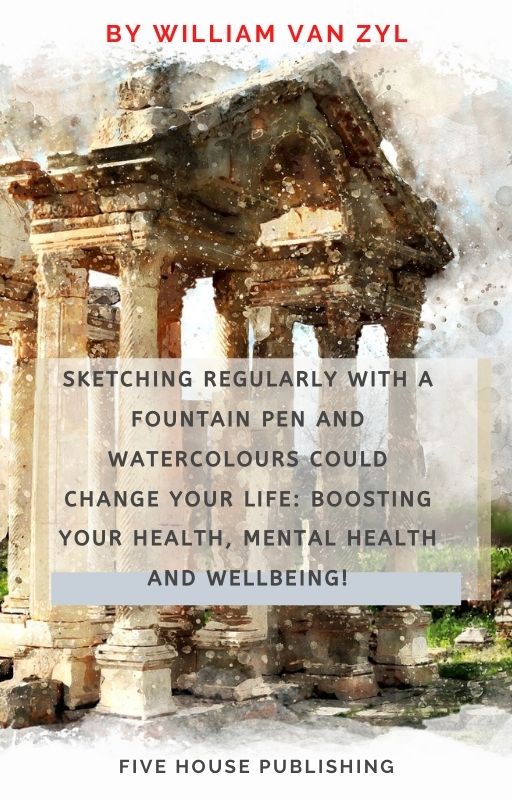


By William Van Zyl (Published in February 2020).
The sheer pleasure of seeing the black ink flow from different nibs onto a top-quality watercolour notebook or sketchbook will bring joy to your soul. When choosing, mixing and applying watercolours to those sketches – seeing the pigment doing magic on the page – with a watercolour brush that oozes delight, frees the soul and awakens the senses. It is pure therapy; the sometimes troubled heart – in a modern, instant, and busy world, which appears to be out of kilter – has to find solace somewhere.
Table of Contents
FEATHERED INK
The black river flows from deep within,
It conjures up vivid memories from the past;
It stains the pure white paper,
It squiggles; it makes a mark.
The liquid-coloured-pigment rushes to a special corner,
It highlights the bright sun.
It touches the black ink and it feathers;
There is a hint of sadness.
Then, as I step back, I see the full picture;
It is beautiful!
The memory on the paper flows and flows;
As it dries, my heart is etched in full colour.
By William Van Zyl
That is precisely what I have experienced after finding the fountain pen and watercolours sketch work of Liz Steel. When I made my first sketches, I experienced something special. Liz Steel, an architect from Australia, has completed hundreds of sketchbooks over the years. She combines different elevations, components, architectural details, writing annotations and notes; she comments and includes verses from the Holy Writ on some of the pages. She also sketches everyday-things like her coffee cups, food, restaurants, and people, to name a few. She explores life around her, and she sketches the scenes she encounters on the go. In a bag, she carries her sketching tools – the bare minimum – which allows her to draw at the drop of a brush.
About two weeks ago, I explored sketching with watercolours and used my fountain pens – which I had for a couple of years. I own a couple of Lamy pens (German quality) and one Montblanc Meisterstuck pen. The nibs vary from Medium, Fine and Extra Fine. I received the Montblanc pen as a gift for my graduation from an exclusive family member some years ago. It glides over the paper like a Rolls Royce. I have used Lamy black and green ink for about 3 years now, but recently – after learning from Liz Steel – I have explored waterproof ink. It works best when combined with watercolours; I have changed the ink in my sketching pens to Platinum ink (Japanese waterproof ink). I love writing with fountain pens. It all started a couple of years ago when I ordered my first fountain pen from a pen company in New Zealand where I live.
The Platinum #3776 fountain pen – with Platinum document ink (water-based from Japan) was my first ink-writing tool. Immediately, I fell in love with the simplicity of writing with a fountain pen; filling the converter with ink from a glass bottle is so fulfilling. Wiping the tip with a paper towel and making strokes on beautiful white paper produces an experience of minimalism, simplicity and pure joy. For me, the difference — compared to using an inexpensive ballpoint pen — is the experience of quality: quality strokes, extravagant letters and numbers on the page. I have always loved calligraphy. I did own a couple of dip pens with some calligraphy ink, but when I discovered the extravagant world of fountain pens and ink, I have indeed come home. I identify with fountain pens. I carry my fountain pens in my shirt pocket, or in my jacket pocket, every day to work — and believe it or not — even over weekends. It is an extension of me. My identity.
The sketching work of Liz Steel is very inspiring. After
studying her sketching tools and some of her techniques, I attempted my first
two sketches. You will find these, and more, in the rest of this article. As
mentioned, I have a couple of Lamy fountain pens, and I use a soft pencil (6B),
a simple eraser, white, blue, red and turquoise watercolour pencils
(Faber-Castell brand), a flat brush, and two Towbow water brushes. A water
brush has a built-in reservoir for water – it squirts water at any time when
required. It can be used to sketch with; however, a watercolour brush works
best.
Let’s look at the benefits of sketching and writing.
‘When computers entered the mainstream, some art schools abandoned drawing classes to make time for the new software they had to teach. The arrival of state-of-the-art programs prompted a backlash among those who’d argued for years that drawing is integral to literacy. “When you draw an object, the mind becomes deeply, intensely attentive,” says the designer Milton Glaser, an author of a 2008 monograph titled Drawing Is Thinking. “And it’s that act of attention that allows you to really grasp something, to become fully conscious of it.” Anyone who has put a pen or pencil to paper knows exactly what Glaser is talking about.’ Credit: https://www.theatlantic.com/entertainment/archive/2015/07/doodling-for-cognitive-benefits/398027/
Here are some exciting findings from researchers. Drawing with pencil, pen, or brush on paper isn’t just for artists. We all do it from time to time. Doodle. For anyone who actively exercises the brain, doodling and drawing are ideal for making ideas tangible. It is the hand-eye-brain connection that really gets our attention. What’s more, according to a study published in the Journal of Applied Cognitive Psychology, doodlers find it easier to recall dull information (even 29 per cent more) than non-doodlers, because the latter are more likely to daydream.
Here is the abstract of the research (Wiley online library):
Doodling is a way of passing the time when bored by a lecture or telephone call. Does it improve or hinder attention to the primary task? To answer this question, 40 participants monitored a monotonous mock telephone message for the names of people coming to a party. Half of the group was randomly assigned to a ‘doodling’ condition where they shaded printed shapes while listening to the telephone call. The doodling group performed better on the monitoring task and recalled 29% more information on a surprise memory test. Unlike many dual-task situations, doodling while working can be beneficial. Future research could test whether doodling aids cognitive performance by reducing daydreaming. Copyright © 2009 John Wiley & Sons, Ltd. Source: https://onlinelibrary.wiley.com/doi/abs/10.1002/acp.1561
Here are 8 Reasons Why Handwriting is an Essential Brain Exercise. Credit: https://www.neeuro.com/eight-reasons-handwriting-essential-brain-exercise/
1. Handwriting activates a unique neural circuit, which makes learning easier.
2. More ideas are expressed when one writes by hand.
3. Cursive writing may be a path to treating dyslexia.
4. Note-taking among college students is a good memory-booster.
5. Writing by hand strengthens the learning process, thereby producing a healthier mind, while typing provides “mindless processing.”
6. Handwriting is a critical step in cognitive development.
7. Writing by hand — and even going beyond that — sketching, drawing, doodling is a necessary mode of human connection.
8. Handwriting entails movement, from the holding of the pen to the touching of the paper to create letters; thus it is considered an excellent sensory motor exercise.
How handwriting can improve your health and mental health.
Have you ever asked the question: ‘What can regular handwriting do for your health and mental health?’ It is A great question. Here are 5 facts that provide answers to the question:
- Writing down your thoughts and feelings can make your wounds heal faster.
- Writing 20 minutes a day improves THE quality of life for patients with cancer.
- People who keep a gratitude journal are more optimistic and exercise more.
- Writing down what you’re grateful for at night can improve sleep.
- Expressive writing has been shown to improve mental and physical well-being.
Back to sketching. I looked at a relatively simple, not so complicated sketch of Liz Steel for my first sketch. In 2015, she did the Ryde Historic Walk in Australia where she lives and sketched the Old Courthouse.
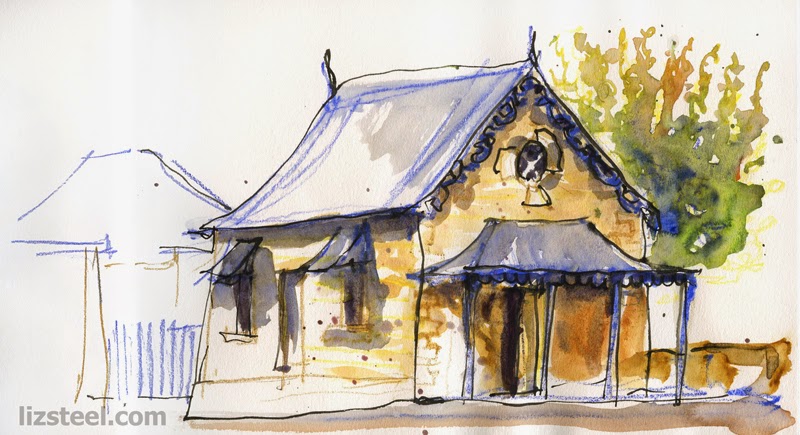
Watercolour painting by Liz Steel (artist & architect from Australia). The old courthouse, Ryde Historic Walk, Australia. Credit: https://www.lizsteel.com/getting-in-the-mood-for-tassie-and-a-review-of-2008-sketchbook/
Liz Steel attended the launch of the #RydeHistoricWalk in November 2015. Liz’s visit to the area and her sketching of the Old Courthouse in 2015 is discussed in this article.
Liz Steel is a well-known artist and architect from Australia. More about her at https://www.lizsteel.com/
DATE OF HER VISIT TO THE OLD COURTHOUSE – RYDE HISTORIC WALK, AU: TUESDAY, NOVEMBER 10, 2015
ABOUT RYDE
Ryde was actually the third settlement established in Australia, after Sydney and Parramatta, so some early names come up repeatedly like the Blaxlands of the Blue Mountains crossing fame. There are also the Glades of Gladesville and various other interesting settlers like Granny Smith, whose retrieval of seeds from a French crab apple and her sons’ subsequent grafting of the tree, once it grew from the seeds, she planted. This happy event led to the development of the Granny Smith apple, which is now famous all over the world. Granny Smith is buried in the cemetery at St Anne’s church. Credit: http://www.desireempire.com/2015/11/ryde-historic-walk-sydney-australia.html
Here is a sketch of Liz Steel’s Lamy Safari fountain pen.
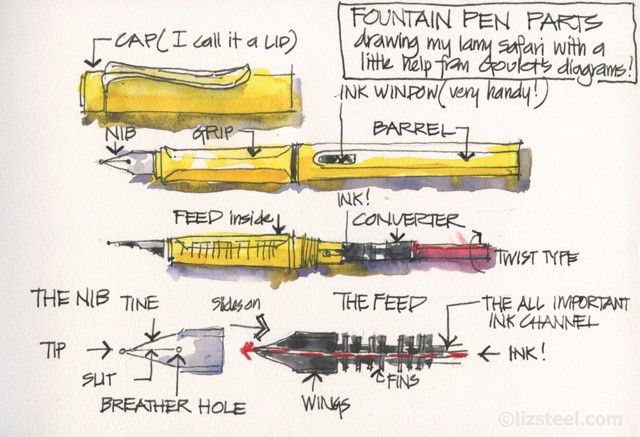
Lami Safari Pen. Read more on her blog about sketching one of her sketching tools. Credit: Liz Steel. https://www.lizsteel.com/fountain-pen-sketching-part-3-using-a-fountain-pen/
Soon, I will be practicing more drawing with my pens.
Here is my response to her sketching of the old courthouse in Australia from 2015:
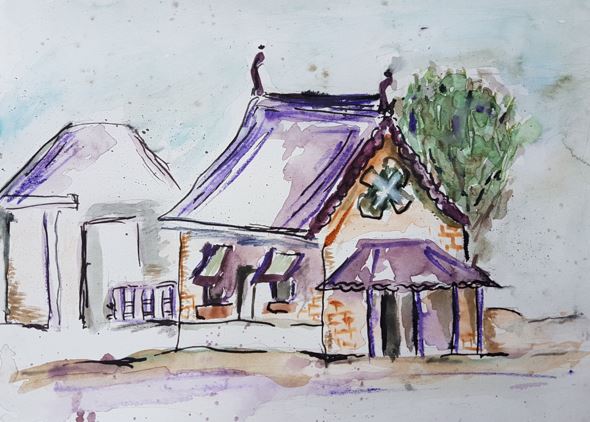
I discovered Liz Steel’s sketching blog some days ago, and I have fallen in love with her sketching style. The reason why her sketches got my attention was the fact that she uses fountain pens. I realised that I could develop my sketching by using my fountain pens. The challenge was to learn how to use watercolours combined with fountain pens and ‘water colouring pencils’. After watching a couple of her videos, I discovered so much about different techniques and a variety of tools available for sketching. I slowed down the videos and paused it to absorb all that was going on.

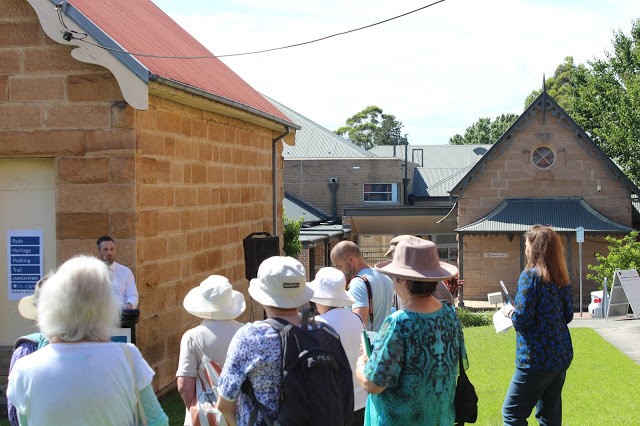
76 Marico Drive:
My second attempt included some writing, a title, and a date
stamp. See the photo of the house, which we as a family lived in. The photo of
the humble house was taken a couple of years ago (2013). The home and garden were
neat and tidy back then – we lived in the house some 40 years ago. My Primary
school and Secondary School years: Living at 76 Marico Drive, Saaiplaas,
Virginia, Freestate, South Africa.

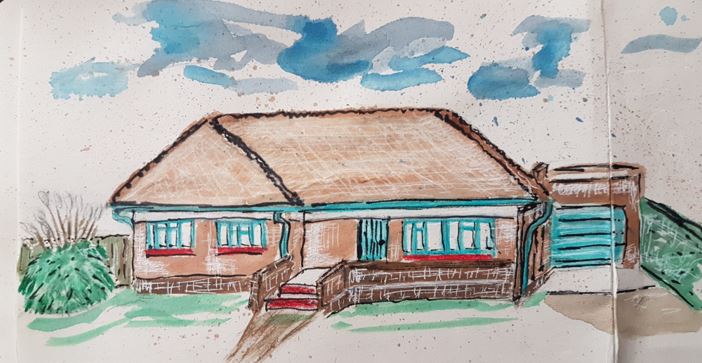
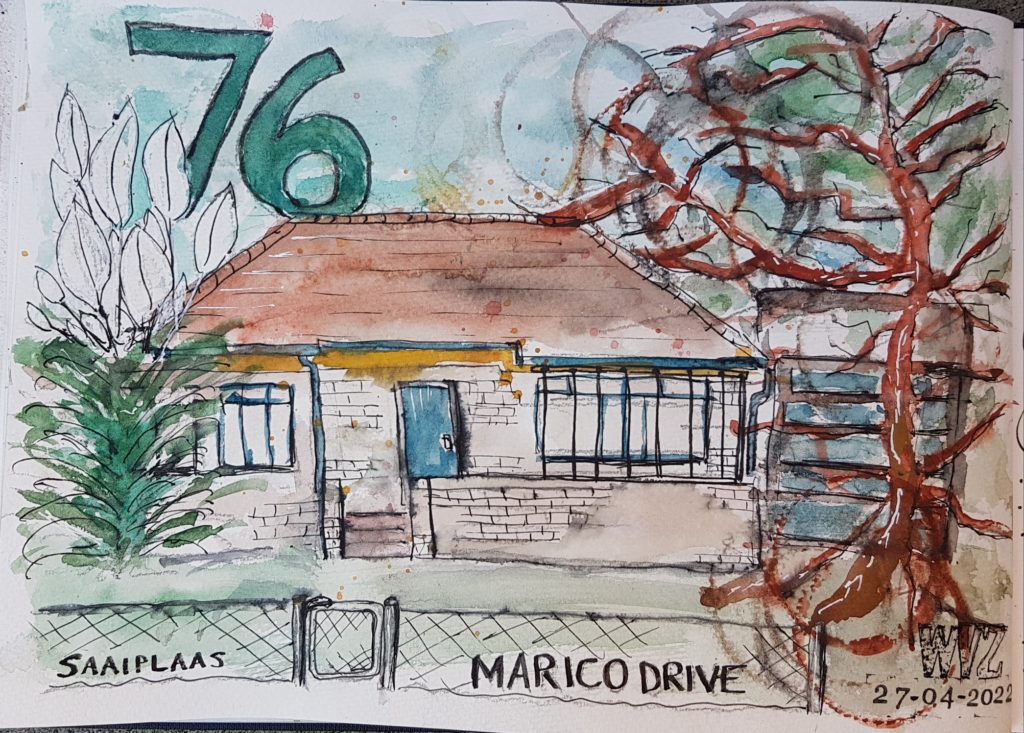

KEYWORDS NEXT TO THE ‘76 MARICO DRIVE’ SKETCH:
A little about Saaiplaas, a suburb in the Town Virginia in the Freestate, South Africa where me and my brothers – Martin & Deon – grew up. We attended the Saaiplaas Laerskool (Primary School) and later the local secondary school –Hoërskpool Hentie Cilliers. However, brother Martin went to the Technical School in Welcome, a town about a 30-minute drive from Virginia. Dad worked all his life on the gold Mines in Virginia: Harmony Gold Mining Company. Mum was at home – looking after us when we were little – but later worked at Virginia Bakery for many years.
We were churchies, and
the AFM Virginia (Apostolic Faith Mission Church, Virginia – A.F.M.) were our
second home. We were of the most loyal members of the church. Apostoliese
Geloof Sending van Suid-Afrika.
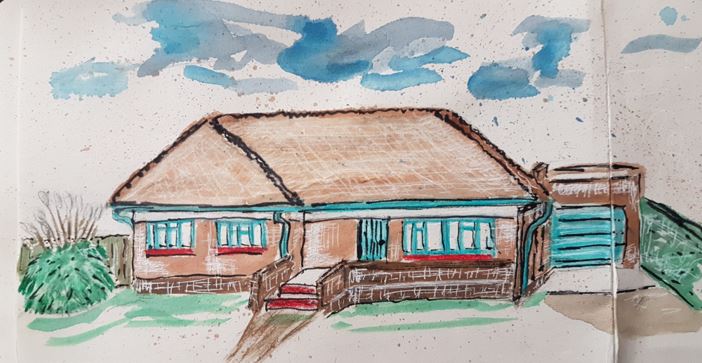
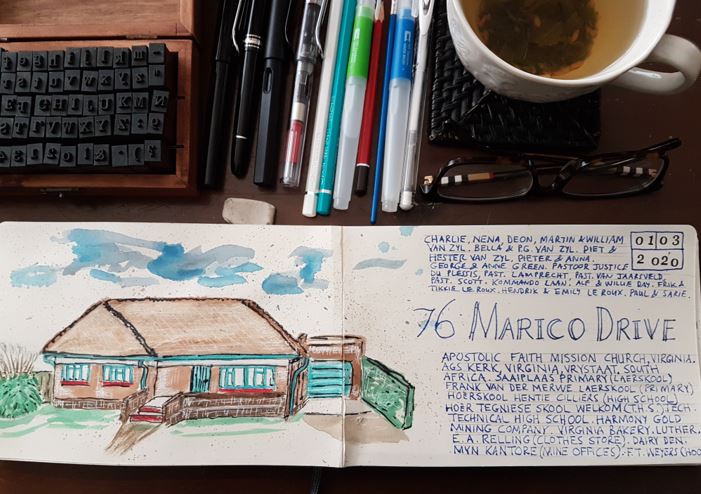
In conclusion, I would like to invite you to investigate and explore fountain pens, watercolours, or any other art medium to express your thoughts, memories, ideas and more. It does something for the soul.
The challenges for sketching are huge:
- Mastering of different types of sketching
- Sketching styles
- Learning how to mix and apply and watercolours
- Interpreting shape and form
- How to create interesting layouts in a sketchbook
- Types of sketchbooks
- Practicing different types of writing
- How to draw people
- Learn about the different tools for sketching
- Different types of inks
- Different size nibs
- Different colours
- Perspectives, and much more.
Copyright @williamvanzyl – fivehousepublishing. 2020.
All rights reserved.
No part of this publication may be reproduced, stored in a retrieval system, stored in a database and / or published in any form or by any means, electronic, mechanical, photocopying, recording or otherwise, without the prior written permission of the publisher.
More about the author:
e-books and articles
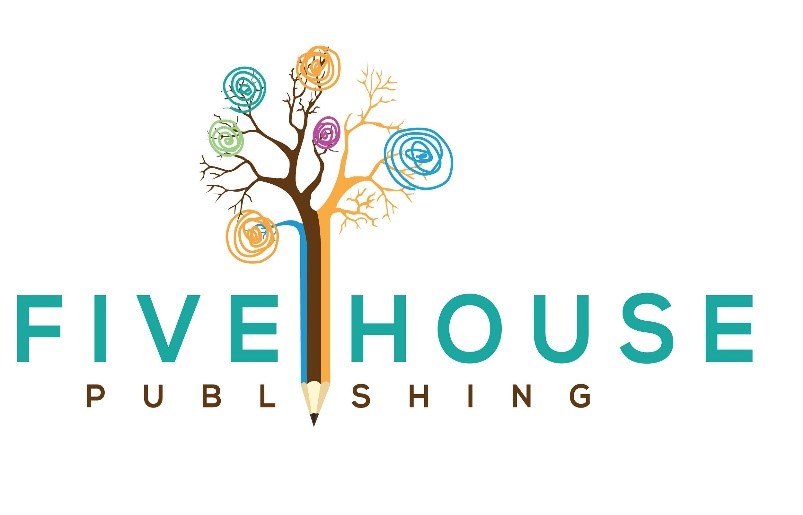
Five House Publishing: https://fivehousepublishing.com/
Also, visit http://williamvanzyl.com/